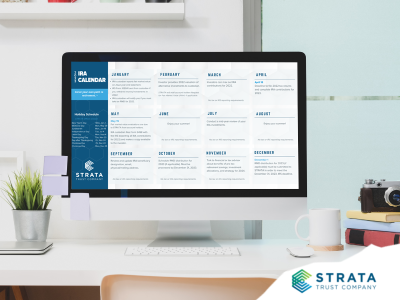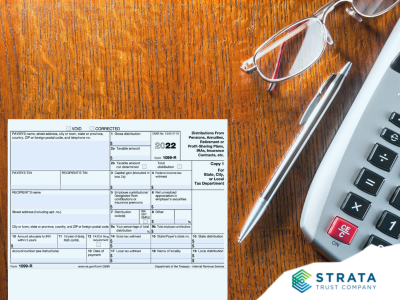Not having to pay taxes on investment growth is one of the hallmark benefits of using an IRA to save for retirement vs. using a taxable account. As with most tax benefits, however, there is the potential for exploitation or abuse when investing IRA assets, particularly when an IRA is invested in an income-generating business. The IRS doesn’t want IRAs to be used as a tax avoidance scheme for businesses, and a business operating within the tax-free environment of an IRA has an unfair advantage over a similar business that is paying tax on its income. So, when an IRA is invested in an entity that earns certain types of income, called Unrelated Business Taxable Income (UBTI), the IRA must pay a tax on that income.
What is Unrelated Business Taxable Income (UBTI)?
An IRA is subject to the UBTI rules because it is a tax-exempt entity. Tax-exempt entities in general are subject to UBTI tax if the entity’s activities generate business income that is unrelated to the reason for the organization’s tax exemption (e.g., charity, education). If an exempt organization regularly carries on a trade or business that is not substantially related to the organization’s exempt purpose (except that the business provides funds to carry out the exempt purpose), the organization will be taxed on the income from the unrelated trade or business.
For a charitable or religious organization, for example, it might be easier to determine what type of business income is related to the purpose of the organization and what is not. For an IRA, it’s a bit more challenging. The tax-exempt purpose of an IRA is to help grow the account balance to be used during the IRA owner’s retirement. An investor might think that any income an IRA investment produces is serving the purpose of growing the IRA. But, under the UBTI rules, if an IRA owns a business that regularly earns income from selling products or services, the operating income from the commercial activity may not be related to the purpose of the IRA. Conversely, the long-term growth in the value of the IRA investment (i.e., the business) may be the type of growth that serves the tax-exempt purpose of the IRA. UBTI is a complex area of tax law and the determination of what is or isn’t UBTI is dependent on facts and circumstances. A tax professional can help you make sure that your IRA complies with the tax laws.
What is certain is that some types of passive income are not considered UBTI, including interest, dividends, royalties, most types of capital gains from the sale of assets, and rents (if not debt financed). Capital gains from the sale of certain types of short-term investments (e.g., flipping real estate properties) may be subject to UBTI.
What If Rents Are Debt-Financed?
If an IRA is invested in property that has been purchased with a non-recourse loan or is invested in a Limited Liability Partnership (LLP) or Company (LLC) that has obtained debt financing to purchase property, income generated by that property is also viewed by the IRS as having an unintended tax advantage. Like UBTI, unrelated debt-financed income (UDFI) is taxable income to the IRA. The amount of income classified as UDFI is proportionate to the debt owed on the property. As the debt is paid down, the percentage of income that is taxable decreases. If the IRA sells the property and there is any debt during the preceding 12-months, a percentage of the gain will be taxable as UDFI.
Estimating UBTI Tax Amount
If your IRA investments generate $1,000 or more of UBTI in a year, the IRA must pay tax on that income. Because the income is earned within a trust, UBTI is taxed at the trust tax rates. If your IRA is invested in more than one unrelated trade or business, the UBTI must be calculated separately for each trade or business and cannot be less than zero. The sum of the separately calculated UBTI is then taxable.
How Is UBTI/UDFI Reported?
You are responsible for determining if your IRA investments have generated UBTI or UDFI of $1,000 or more in a tax year and, if so, for completing IRS Form 990-T, Exempt Organization Business Income Tax Return. Each investment earning UBTI should be reported on a separate Schedule A. For 2022, Form 990-T must be filed electronically, and the tax paid, by April 18, 2023. Your service providers should be able to assist you with these tasks.
- Your IRA’s investment sponsor may provide you with information regarding UBTI/UDFI. For example, if the IRA is invested in an LLP or LLC, the IRA will receive a Schedule K-1, Partner’s Share of Income, Deductions, Credits, etc., reporting income for the year. Part III, Box 20, will report if there is any UBTI, using code V.
-
You or your tax professional will work to calculate UBTI/UDFI, secure an Employer Identification Number (EIN) for the IRA, and electronically file your completed Form 990-T with the IRS.
- After all forms are filed and copies have been submitted to STRATA, you may fill out and submit STRATA’s Expense Payment Authorization form to authorize STRATA to pay the tax from your IRA.
If Form 990-T is filed late or not filed, the IRS may assess penalties and interest. The minimum penalty for a return that is more than 60 days late is the smaller of the tax due or $450. Form 8868, Application for Automatic Extension of Time To File an Exempt Organization Return, may be used to request an automatic 6-month extension of time to file Form 990-T.
Identifying and calculating UBTI is complicated and, depending on the amount of UBTI tax liability your IRA incurs, estimated tax payments may need to be made throughout the year to avoid penalty. You can find more information about Tax on Unrelated Business Income of Exempt Organizations in IRS Publication 598, but professional tax advice is recommended to ensure your IRA is paying any tax owed and avoiding penalties and interest.
Additional Resources
For more information, you can visit our FAQ section on UBTI or read more about Tax on Unrelated Business Income of Exempt Organizations in IRS Publication 598.
Details about Schedule K-1 and Form 990-T can be found on the IRS official website.
Download STRATA’s Quick Guide to UBTI/UDFI for a better understanding of taxable event triggers and tax reporting, plus additional information on IRS Form 990-T.









